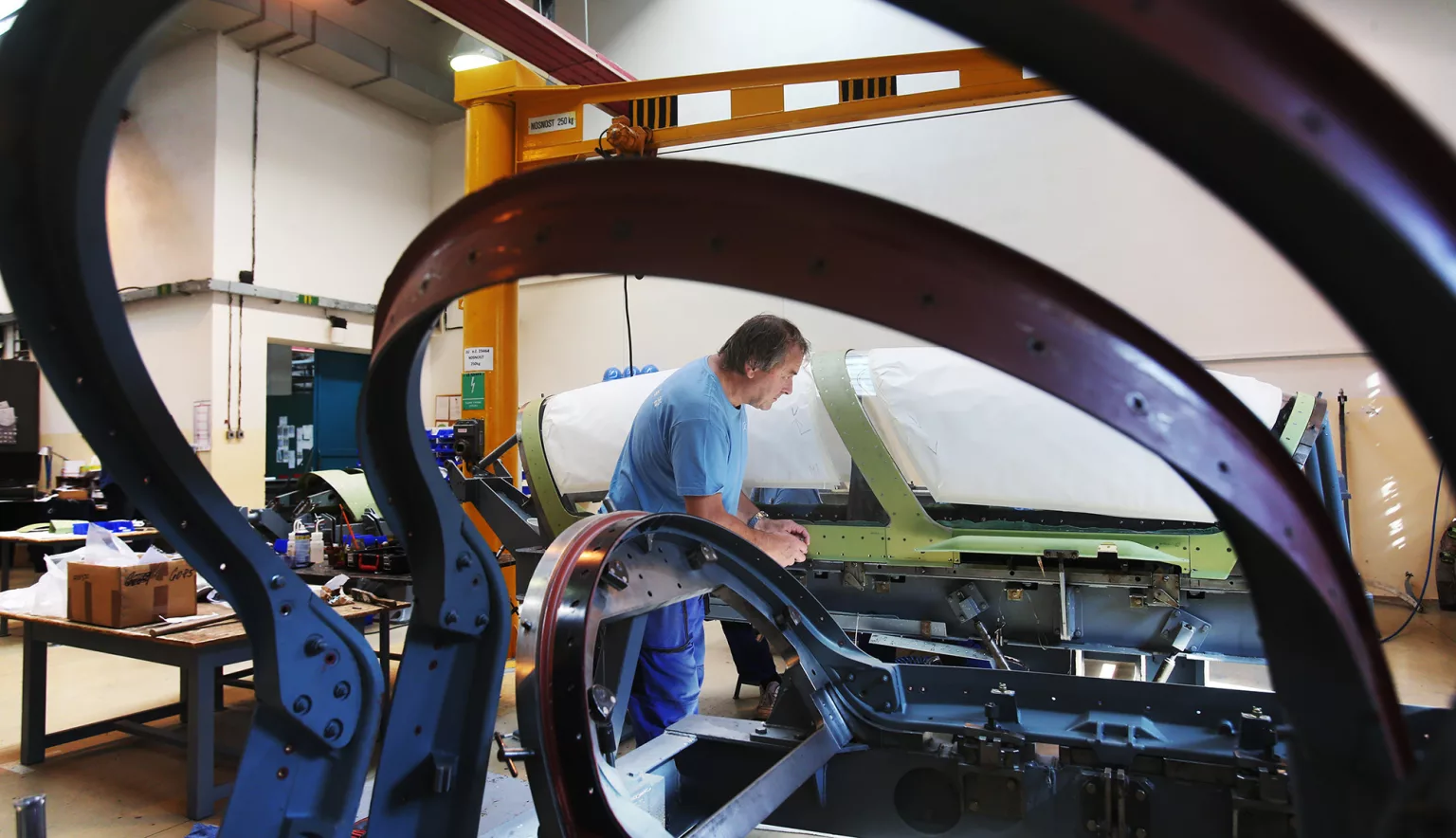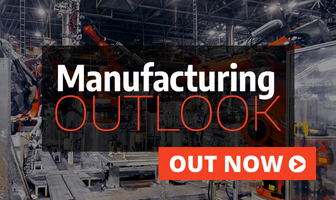As Aero Vodochody prepares for its 100th anniversary celebrations, the Company is commemorating its heritage and prestige via a host of new products and innovative upgrades.
SOARING FOR A CENTURY
2019 will not only see Aero Vodochody enter the third pivotal year of its 2016-incepted decade-long strategic vision, but it will see the Czech manufacturer celebrate its 100th anniversary; a milestone which will be commemorated through a host of product innovations and network expansions.
100 years in any sector is worthy of commemoration of course, but to span numerous challenging historical and regional events, and to come out the other side as a market-leading entity is testament to the light jet trainer aircraft producer’s fortitude and business acumen.
“One of the most important points which is sometimes not realised, is that Aero is actually the largest European company in the general manufacture of light jet trainer aircraft,” the Company’s President and Chief Executive Officer, Giuseppe Giordo affirms. “Over the years we have manufactured and delivered more than 6,000 aeroplanes and our fleet has accumulated more than 13 million flight hours, to further highlight Aero’s industry significance.
“From this point of strength, we are working with more than 40 different operators around the world on all continents, and still have more than 500 aircraft operational across this footprint.”
With this in mind, Aero embarked on its 2016 strategic vision from an already widespread and lucrative platform, and it was triggered in part by the privatisation of the Company which occurred seven years earlier in 2007, as Giordo continues.
“Historically, Aero was fully controlled by the Czechoslovakian Government but private shareholders bought the Company in 2006/2007 and this kick-started the journey on the way to the 2016 milestone where these shareholders decided to relaunch the business in international markets.
“In 2016 we started a very detailed strategic plan for the Company which covered the next 10 years of activity. And since compiling this, we have begun implementing it across a range of considerations including business arms, strategic investments, partnership building and human resources.”
Chief among its aims was to reaffirm Aero as a regionaly-leading aircraft manufacturer, derived from increased activity in launching new and improved products to the market. Simultaneously, the Company looked to update existing aircraft on this international scale, in line with latest trends, technologies and innovations.
Giordo explains: “The main strategic goal we have is to come back as a globally leading aircraft manufacturer in areas of jet trainers and light attack airplanes; without 100 percent abandoning our aerostructure strand of the business, but instead revising it and streamlining our focus.
“Our portfolio now concentrates on programmes where significant technological advancements are required. On the aerostructure side this includes producing components for the Embraer KC-390; fully-assembled and equipped wing fixed leading edges for the Bombardier Cseries; and our involvement on the helicopter side of the business, mainly with the Sikorsky Black Hawks.”
IMPORTANT PROGRAMMES
Aero’s strategic goal is to take care of these existing customers, but primarily to compound this sustainable revenue stream with the development of its own jet trainer products; as epitomised by two leading examples.
Giordo introduces: “The most important programme we are currently working on is the new generation of L-39 training aircraft called the L-39NG. It is the most cost-effective solution of all private trainer jets in the market, and we are estimating a market potential over the next 10 years of more than 1,000 airplanes which will see us capture at least 10 percent of the market.
“The L-39NG is a product that will prove to be very attractive to customers, leveraging the success of the wider L-39 fleet of which we have already produced more than 3,000 aircrafts.”
The product’s appeal derives from a merging between the traditional fleet’s already refined characteristics, and a host of new infrastructural, design and technological tweaks to bring the L-39 into the next era.
Integrating the latest technologies, various new systems and a host of modernised composite materials in critical parts of the aircraft, these new systems and components have already been certified and the production of the first full aircraft is scheduled for certification at the end for 2019.
“The first delivery will be in the first quarter of 2020 and we’ve already received our first customer and are close to announcing a further two in the market,” Giordo says. “The market is aware of the positive characteristics of the L-39NG – whether they choose the full aircraft or just an integration of the core systems initially – and the product is on track to help us fulfil our milestones set out in the 2016 strategic plan.”
The second programme driving Aero’s success at present is the realisation of its L-159 ALCA (advanced light combat aircraft), a more complex light attack aircraft. Complete with the most modern radar and guidance systems and a host of additional, technologically advanced solutions it is a spinoff from the L-159 series which has been used over the past two years by the Iraqi air force in its fight against Isis.
Giordo notes: “They have had excellent results in terms of performance and based on the Iraqis’ experience we have had a lot of requests from other countries to adapt the L-159 for them; including in the US as part of a significant training programme.
“The L-159 is one of very few products to be able to respond to the demands of a light attack aircraft and it can outperform some fourth or even fifth generation fighters when it comes to certain missions. It is lighter, with much cheaper operating costs than alternatives, making the market very responsive to the product.”
OFFERING INTEGRATION
With product appeal obviously comes demand, as epitomised by the US and Iraqi air forces’ interest in Aero’s portfolio.
To make the proposition even more attractive though, the Company has strived to bring a sense of realism and understanding to what is a very expensive and complex market, by offering interim solutions.
For some partners, overhauling their fleet or buying entirely new products might not be feasible, and as such, Aero also offers the L-39CW which is the same original L-39, only with more modern avionics and the new Williams FJ-44M engine. This way, customers are able to upgrade their existing versions before moving on to the full L-39NG option.
Giordo enthuses: “This is a new concept, offering integration somewhere between new and old platforms. Customers can initially opt to fly with the old frame but the new system; a configuration which was certified at the end of 2017. We offer this interim solution for companies who don’t want the L-39NG immediately and then, when they have the budget, we take back the interim solution and implement the full package.
“Alongside the new products, and our aerostructure services for companies like Embraer, Bombardier and Sikorsky, this represents our third business line.”
A MORE COMPETITIVE POSITION
Aero has an uncanny knack of realising its own strengths and limitations and subsequently finding the most optimum solutions, products and market approach to maximise business. From the three aforementioned business lines, such an ethos is evident, but when you compare the Company to some of its multi-billionaire competitors, Aero understands that investments and progression can’t be a lone-journey.
“At Aero, the characteristic and realisation is that no programme can be done alone, and as such it is important to form partnerships with the right operators, suppliers and even local SMEs,” Giordo says. “So, one of our strategic goals has been to identify and secure these right strategic partnerships with big operators around the aeronautical world, in order to move our products into a more competitive position.
“Through this strategy we have aligned ourselves with leaders in numerous respective fields of electronics or avionics etc, as we well as through training provisions, to ensure the correct industrial partner is in place for all aspects of our operations, in each location we serve.”
Being an international entity adds a further element of complexity to this philosophy as the likes of Embraer, Bombardier and Sikorsky continue to elevate the Aero brand while leveraging its market-leading expertise. Meanwhile, on a local note, Aero stays true and loyal to its roots by creating a network of domestic SMEs so they too can share in the Company’s success.
A UNIQUE WAY OF WORKING
One dynamic of the brand which is intrinsically, proudly and almost unwaveringly local is Aero’s HR strategy. HR has been a fantastic way for the Company to resonate with the Czech Republic over the years and continues to be so. Rather than trying to further its international growth by employing expats, the Company attempts to hire, develop and retain the best local talents who are able to identify international trends and requirements.
Giordo details: “The Czech Republic’s unemployment rate is almost zero so it’s not easy to find and keep the requisite skills in this market. This is why we continue to invest in HR though, making the leadership structure as refined as possible, while also partnering with technical schools, universities and institutes to try and attract young talent into the Company.
“Once people are in we then spend a lot of time and effort in developing their capabilities; not only from a technical standpoint but in evolving their mentalities to focus not just on the Czech market but on all markets that are pertinent to Aero’s operations.”
This international consciousness not only aids the Company’s aims but diversifies each employee’s own knowledge base and market outlook; a positive that often gets repaid in terms of loyalty and work rate.
“Ultimately, our mission is to create the base of a business that is internationally operating but locally driven by Czech professionals,” Giordo sums up. “We have a unique way of working here at Aero, so it’s important to try and foster a unique knowledge base and collaborative work ethic amongst the workforce, including technical teams, engineering personnel and all other departments within the Company.
“It helps to form a nice bridge for potential customers too when they see we have hard-working, innovative, local personnel who are here and ready to influence the international market.”
PART OF THE COUNTRY’S DNA
Giordo goes on to pinpoint this aspect of human resources as one of Aero’s key differentiators setting the business apart from market competitors at present.
Further alluding to high levels of operational performance and engineering expertise, he remains as confident as ever in realising the business’s strategic vison on the eve of its centenary.
“It’s of course easier to say than to do, but as we celebrate 100 years in the industry, I’d love to have achieved the aforementioned results across our product offering and strategic structure goals,” he concludes. “If these are achieved then it means we will be showing the world that we are back in the position of the region’s biggest manufacturer of jet trainer aircraft.
“Being a smaller company with private shareholders, we have an infrastructure that facilitates quick decision making and effective relationship building as part of this journey. But most importantly, it will reflect the heritage that is both present and significant within the Company, and indeed the country. For Czech people, they don’t have the sea to look at, so they look to the air. The air is part of this country’s DNA, and so is Aero Vodochody.”





















